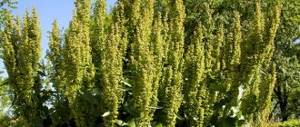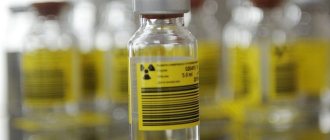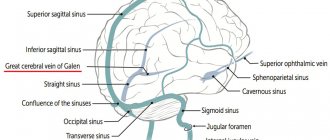Composition of green tea
Green tea contains up to 200 biologically active compounds. So, its composition is quite complex, also because the levels of various ingredients are variable and depend on the location of growth, harvest season and production process.
The main substances in this drink:
- Polyphenols.
This is the largest and most significant chemical compound in green tea, because they contain flavonoids, an important class of antioxidants. True, if there are too many polyphenols, the taste of the drink suffers - the tea becomes too tart and astringent. Therefore, as a rule, green has a lower level of polyphenols than its black counterpart.
- Flavonoids.
We are mainly talking about flavonols such as kaempferol, quercetin and myricetin. These are powerful antioxidants with antihistamine and anti-inflammatory effects.
- Catechins.
Dried tea extract may contain 30% to 40% catechins.
These are the nutrients responsible for the special benefits of green tea. For example, epigallocatechin
is the most active and best-studied of all green tea ingredients and accounts for most of the drink's health benefits.
Epigallocatechin
has been found to be more than 100 times more effective at neutralizing free radicals than vitamin C and 25 times more effective than vitamin E. - Theanine.
This is an amino acid found only in tea. It is this that gives it its characteristic aroma. Catechins and caffeine taste bitter and tart, while theanine tastes sweet and fresh. Theanine stimulates alpha brain waves, calms the body and promotes mental relaxation. It is the interaction of catechins, theanine and caffeine that makes green tea such a delicious drink.
- Caffeine.
It is a plant alkaloid found in coffee, tea and cocoa. It acts as a natural pesticide, protecting plants from certain insects that feed on them.
- Vitamins and minerals.
Green tea contains several B vitamins and vitamin C. Because green tea is processed less than black tea, the vitamins remain intact during the production process of the drink. Other ingredients in green tea include minerals. In particular, aluminum, fluoride and manganese.
Green tea also contains organic acids such as gallic and quinic acids, as well as 10% to 15% carbohydrates and small amounts of volatiles.
How to brew tea correctly
Green tea should be brewed with barely boiling water.
There are several secrets to brewing tea, thanks to which it will not only be healthy, but also very tasty.
The most important points for getting a good drink are high-quality water and high-quality tea leaves. You cannot take water from the tap. Ideally, you need spring water for tea, but in city conditions purified filtered water is suitable.
Next - dishes. Do not use a metal container. Ideally, tea is brewed in a porcelain or ceramic teapot. The water should be “white spring” - this is a state when it has not completely boiled, but bubbles have just begun to appear.
Let's look at the step-by-step instructions for brewing green tea:
- Boil water in a kettle and prepare the teapot.
- When the water starts to boil, you need to turn it off and wait a couple of minutes for it to cool to 80 degrees.
- The teapot needs to be warmed up; to do this, add a couple of tablespoons of boiling water.
- Next, the tea leaves are poured at the rate of one teaspoon of tea per cup of boiling water.
- Pour boiling water into the teapot and wait 4-5 minutes.
It is recommended to use large-leaf tea; it is considered to be of the highest quality - tasty and healthy.
There are hundreds of recipes for brewing tea - but this one is the classic and most popular.
Protective properties of green tea
According to recent research by scientists from Newcastle University, regular consumption of green tea may protect the brain from developing Alzheimer's disease and other forms of dementia.
The study, published in the academic journal Phytomedicine, also suggests that this ancient Chinese medicine may play a vital role in protecting the body from cancer.
Specifically, they found that when green tea is digested by enzymes in the gut, the resulting chemicals are actually more effective against key Alzheimer's triggers than the undigested form of the tea.
The digested compounds were also found to have anti-cancer properties, significantly slowing the growth of tumor cells.
Previous research has shown that compounds known as polyphenols present in black and green tea have neuroprotective properties, bind to toxic compounds and protect brain cells.
Benefits of green tea for skin
Antioxidants contained in green tea have an anti-aging effect and can prolong the beauty and youth of the skin, including protecting it from photoaging.
Photoaging due to exposure to ultraviolet rays is the main cause of wrinkles, age spots and other age-related changes on the skin.
Scientists have discovered that green tea polyphenols can slow down these processes. Thus, regular consumption of green tea can prevent some damage to DNA cells caused by UV radiation. Topical preparations containing green tea may also benefit the skin because they have anti-inflammatory, antioxidant, and photoprotective properties.
One study found that products containing green tea extracts improved skin texture and reduced the appearance of fine lines and wrinkles.
An analysis of the benefits of green tea for the skin suggests that it has anti-inflammatory, antioxidant and anti-carcinogenic effects.
Those who suffer from acne can use pure green tea to cleanse their skin. Lotions containing it can help reduce the number of breakouts on your face. In addition, epigallocatechin from green tea significantly reduces skin inflammation, which usually triggers acne.
Another benefit of green tea for acne-prone skin is reducing sebum production.
Which is better: loose leaf tea or bagged tea?
Compound
It is not difficult to recognize loose leaf tea in a cup, but the powder in a bag can be anything. Bagged tea most often consists of a mixture of several varieties of plants from different plantations. One sachet can concentrate up to five different ingredients [9]. The average person will not be able to distinguish the contents of the bag, but a tea professional can easily point out all the varieties that have been crushed.
Why sell a tea blend rather than just one variety? A combination of several varieties will definitely give a stable result - a recognizable taste and bright aroma. It is these characteristics that are important for a branded product. Moreover, tea leaves from different plantations may differ in quality. To compensate for the differences, companies began combining several ingredients. The formula of such tea is unstable and can change in different directions even daily. But the average consumer will not feel the difference at all - the taste and color will remain the same.
Quality
Not all manufacturers travel to plantations to fully control the production process. One tea bag contains approximately 2 g of raw materials. One gram is high-quality tea, but instead of the second they can put garbage. It depends on the region where the tea is grown, quality control, harvesting method, and the composition of the tea leaf itself.
A company that values its reputation will not use low-quality filler, but even impeccable managers have force majeure situations. In loose leaf tea it is much easier to track the same garbage; It is impossible to do this in a packaged version.
Flavor intensity
Loose and bagged tea can be made from identical raw materials. One sheet is crushed into pieces of the required size, then they are automatically separated and packed into different containers. Small particles release flavor and aroma faster and more intensely after contact with hot liquid. Why?
Juice is released from the cut leaf. The finer the sheet is cut, the greater the oxidation area and, accordingly, the strength. A drink from a tea bag will always be richer than loose leaf tea.
Interestingly, the concentration of raw materials in the bag is calculated for one standard 200 ml cup [9].
Aroma
Many people like to go to tea shops to smell the teas and make a decision based on the aroma. But does this make sense? No, none. The smell that comes from the collection does not belong to the tea leaves, but to the flavorings.
Manufacturers usually do not add artificial colors or odor enhancers. For this, natural ingredients are used, such as hibiscus. It simultaneously enhances the aroma of the drink and colors it in a bright red hue.
Natural ingredients such as essential oils and artificial ones, such as special food sprays, are used as flavoring agents. They are used only if the natural flavoring does not cope with its task.
Best materials of the month
- Coronaviruses: SARS-CoV-2 (COVID-19)
- Antibiotics for the prevention and treatment of COVID-19: how effective are they?
- The most common "office" diseases
- Does vodka kill coronavirus?
- How to stay alive on our roads?
Stress resistance
Green tea is also effective in combating stress and anxiety. For example, L-theanine, an amino acid that helps relieve tension, gives it relaxing properties.
L-theanine promotes the creation of alpha waves in the brain, relaxing the mind in stressful situations while maintaining alertness. Every day, researchers are discovering more and more benefits of L-theanine.
It has also been linked to improved cognitive function, reduced anxiety, improved sleep quality and overall well-being.
Scientists believe that theanine may reduce anxiety because it acts on the neurotransmitters GABA, increasing their concentration, which is important for those under stress.
GABA affects the levels of two other “feel good” neurotransmitters, serotonin and dopamine, known as the feel-good hormones. Increased dopamine levels also lead to improved memory and learning ability.
A study published in 2012 tracked the effects of L-theanine and caffeine on mental performance. Participants were exposed to several psychological as well as physical stressors, and they received either placebo alone, L-theanine and placebo, or caffeine and placebo. Research has shown that theanine reduces blood pressure and anxiety.
Moreover, even the caffeine contained in green tea enhances stress resistance. Its relatively small amount (30 to 50 mg per cup) may not cause hyperactivity or nervousness like a cup of coffee. This dose of caffeine keeps the brain active by blocking adenosine, an inhibitory neurotransmitter that acts as a central nervous system depressant. It also increases the concentration of “good” neurotransmitters and the release of dopamine.
Therefore, when under stress, it is better to give up coffee in favor of green tea.
All about caffeine
Caffeine stimulates the heart and increases blood pressure
We have already written about caffeine above. This is a substance that directly affects the excitation of the nervous system. Let's look at the beneficial properties of caffeine:
- Increased blood pressure
- Stimulation of the heart muscle
- Burns calories
- Prevaricates metabolism
- Has an invigorating effect, helps you wake up and concentrate
It is impossible not to note the negative effects of caffeine:
- In large quantities it can cause nervous system disorders
- Provokes the development of gastrointestinal pathologies
- Causes cancer
If you take caffeine in limited quantities, there will be no harm. It is important to remember that tea and coffee contain a lot of caffeine, so you should not drink too much per day.
Neuroprotective properties of green tea
Science has proven that green tea promotes healthy brain function.
A 2011 study of older adults who regularly consumed green tea found less decline in cognitive function than those who drank a placebo. The study authors attributed this improvement to L-theanine's neuroprotective mechanisms.
Observations in 2021 have shown that it's not just L-theanine - it, together with other compounds such as caffeine and catechins, helps improve cognitive function, maintaining brain function.
There is also evidence that the flavonoids in green tea extracts help increase dopamine and serotonin levels in the brain. These neurotransmitters play an important role in healthy brain function and are associated with feelings of well-being and happiness.
Green tea protects against Alzheimer's and Parkinson's diseases because the amino acids and enzymes in green tea have beneficial effects on brain health, helping to prevent neurodegenerative diseases.
The antioxidant properties of flavonoids in green tea help reduce toxin levels in the brain and also help protect against the effects of Alzheimer's disease.
The antioxidants found in green and black tea help reduce the effects of oxidative stress on the brain.
Additionally, researchers have found that drinking 3-4 cups of green tea per day may also help reduce symptoms of mild depression in older adults.
Methods
The study included 100,902 adults from China who participated in the Prediction for ASCVD Risk in China (China-PAR) program. All individuals included in the study had lived in 15 Chinese provinces since 1998.
Information on tea consumption was obtained from questionnaires. Based on the amount of tea consumed per week, 2 groups were divided: drinking tea 3 or more times a week (habitual consumers) and never or rarely drinking tea (less than 3 times a week).
The researchers performed regression analyzes and calculated hazard ratios for atherosclerotic cardiovascular events and death.
Autophagy
Autophagy is a vital process during which cells get rid of unnecessary or damaged components. It is known that different types of fasting can trigger it. But there are also aids - such as green tea.
Green tea has a long history of use in traditional Chinese medicine and other parts of the world. It has many health benefits including antioxidant, anti-inflammatory and anti-carcinogenic properties.
EGCG (epigallocatechin gallate) is the major polyphenol in green tea that has been shown to stimulate autophagy in vascular endothelial cells. It also reduces lipid accumulation, the risk of cancer, cardiovascular disease and bacterial infections. All of these benefits are primarily due to autophagy.
In addition, green tea extract can increase metabolic rate by 4%, fat oxidation by 17%, and insulin sensitivity by 13% within 24 hours.
Features of product production
Tea leaves are collected in the warmest and most picturesque places in the world: India, Sri Lanka, Japan, China, Africa. There are several ways to collect the “harvest”: machine and manual [3]. Companies that produce premium quality tea use the second method. Workers manually collect only the top two leaves and a bud: it is in this part of the plant that the special aroma, taste and benefits are concentrated. This collection method is called two leaves and one bud. Everything below the bud and the first two leaves is used by companies that focus on quantity rather than quality [4].
After picking, the tea leaves are dried. This happens in specialized "tea gardens". The moisture is completely removed from them and they become like fallen autumn leaves. Next, the dried tea base is sent into a huge drum, which gives it the required shape. Most often, manufacturers use a spiral shape or a regular straight line.
Only after these three stages - picking, withering and rolling - are the tea leaves fermented. During the oxidation process, separation into green/black/white and other varieties occurs.
Remember: green tea is not specially fermented. This process occurs naturally within the raw material itself at some stages of production, but the degree of oxidation of the finished product is minimal.
In Japan, handfuls of dried leaves are placed in steam drums, and in China, they are placed in huge hot frying pans for 30 seconds [4]. The enzyme cell juice of the raw material is deactivated and fixed in the tea leaf. What does it mean? The oxidation process does not start inside the plant, so the tea retains its natural color and rich nutritional composition.
The final stage is drying. The sheets are simultaneously dried and sorted. The product must match in color, structure, shape and size. During sorting, tea dust, seedings and broken pieces are sifted out.
Brief conclusions
- Green tea contains up to 200 biologically active compounds, which explains its special health benefits.
- Green tea promotes healthy brain function.
- Antioxidants contained in green tea have an anti-aging effect and can prolong the beauty and youth of the skin, including protecting it from photoaging.
- Green tea is also effective in combating stress and anxiety.





![Rice. 1. Structure and composition of Lp(a) (adapted from [1])](https://kapiparando.ru/wp-content/uploads/ris-1-struktura-i-sostav-lp-a-adaptirovano-iz-1-330x140.jpg)


